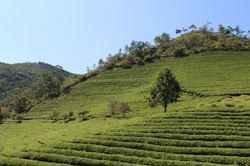 Another destination during my trip to the southern part of the peninsula was Boseong, a small town on the south western side of Korea. This town, approximately 3 hours from Busan, is famous for its rolling hills on which green tea plants are carefully managed and harvested. Boseong green tea offers up some of the highest quality tea on the peninsula (with prices to match that reputation). I'm a big fan of green tea flavored food so I was excited to visit the Green Tea Plantations where I was able to try a green tea smoothie, green tea bibimbap (below) and an assortment of green tea candies. A view from the top of the plantation - you can see green tea plants, trees, the mountains and in the background the sea.
0 Comments
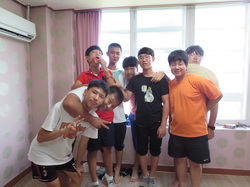 After returning from Bali I prepared for my final few classes in Korea. Most Korean schools are on vacation in late July and into August. However, that doesn't mean there aren't classes - students sign up for extra classes and camps. I taught a series of classes to a bunch of very unenthusiastic 1st year high school students (and who could blame them, I wouldn't want to take classes during my break either). The following week I taught a class to a group of 8 middle school students. We spent the entire day studying food and below are a few photos from our class together - Taste Test Food Advertisement Iron Chef Ramyeon Cook Off 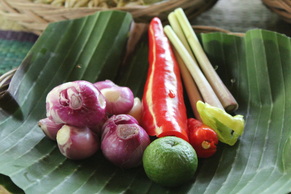 If you know me personally or have read my blog before you probably know how much I love to try different cuisines and learn how to re-create them in my home. For me cooking is a great way to unwind after a long day at work, an enjoyable hobby and an artistic outlet. I've been fortunate to have taken cooking classes in Japan, Vietnam, Cambodia, Laos, Thailand and Korea and so I decided to add Indonesia to the list. Finding a cooking class that is the right fit can be difficult - does the class balance cultural insight with the cooking instruction? Do you get your hands dirty or are you, the student, regulated to standing off to the side watching the instructor? And most importantly, for me, are there vegetarian dishes and if so are they popular foods adjusted for dietary restrictions or something that the locals might not recognize? The food I want to learn how to make is every day food - things people eat at home, though typically that needs a bit of tweaking so I can eat it. I spent as much time researching cooking schools in Bali as I did hotels and guesthouses for my trip. There are a variety of cooking schools on the island, many of them located in or around the town of Ubud. Many of the guesthouses also offer cooking classes and I ended up signing up for one at the guesthouse where I stayed. Unfortunately that experience was highly disappointing so I was very thankful I also had a reservation with fellow travelers at the Green Kitchen Cooking Class. I found Green Kitchen online when I was searching for cooking classes while still in Korea. I appreciated that they had an entire vegetarian menu in addition to a rural location outside of Ubud. The class cost 330,000 rupiah (~33USD) and included pick up and drop off in Ubud. The only catch was that you needed a minimum of 2 people and since I was traveling alone that created a conundrum. However, I was easily able to find fellow single travelers who were also interested in a cooking class on Couchsurfing and we all signed up. So, early one morning with three other foreign tourists I hopped into an SUV and we headed away from Ubud for our cooking class. 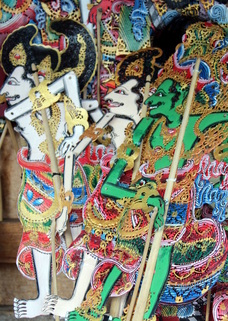 Our first stop on the way to the cooking class was a local market (pictured above). Most people in south east Asia don't shop at grocery stores like in the United States and other Western countries. Instead they shop at small stands that are part of a larger indoor/outdoor market. Local farmers bring in products they grow on their land and people visit the market daily to pick up fresh meat and produce for their meals. Our guide led us through the market and pointed out various points of interest, describing some items while explaining the significance of others. He also picked up a few items from the market, produce that they do not grow on their own farm. The market was similar to those that I have been in other countries throughout South East Asia so the experience was not necessarily new to me. However, we happened upon one stall which will forever make it memorable. A man there sold handmade shadow puppets that are used to tell the Ramayana, a popular Hindu epic. These carefully carved puppets are made out of cow hide and then painted with bright colors. The price of these beautiful pieces of art? A mere $15 USD (I suspect he might have upped the price because we were foreign tourists but the price was still incredibly low). After I happily bought 3 of the puppets we made our way back to the car to the cooking school.  After arriving at the main house we were given a quick tour of the grounds and the family temple before heading out to gather fresh produce for our lunch. This involved a trek through the rice paddies that bordered the small town. If you've never seen a rice paddy up close you might be surprised to know that rice grows in water. The paddies of Bali are typically terraced with water running from the paddy at the highest elevation into those below. Naturally this means that our walk was a bit muddy and so it was not surprisingly that by the end of it were had mud caked on our shoes, up our legs and in my case on my dress (I slipped and fell). 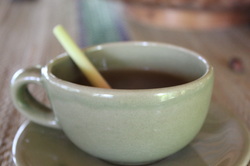 After we made our way through the rice paddies we walked up the road to a secluded out door traditional Balinese kitchen. We sat down and enjoyed a cup of tea before our guide described the typical ingredients of Balinese food including rice, fresh vegetables, garlic, ginger, peanuts and so much more. After we had rested a bit the cooking aspect of the adventure began, we reviewed the recipes for the day and were introduced to various cooking techniques including how rice is steamed in a bamboo basket over a pot of boiling water. We also learned how to break up a coconut and grate it in order to make coconut milk and oil. During our entire lesson we could hear a religious ceremony being conducted at a Hindu temple below in the valley. The chanting offered a soothing background noise to the entire event. Rather than bore you with the details I'll just post the photos of the cooking lesson below because I believe they speak for themselves. 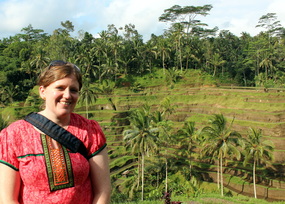 My final international adventure while living in Korea was also one to which I was truly looking forward. As so many people do I have a "bucket list" of sorts, a series of things I'd like to do during my lifetime. Bali has always ranked pretty high on that list. Photos of the Indonesian island drew me in with lush green rice paddies, shimmering blue waters and Hindu culture. When I pondered where to go during my summer vacation naturally I thought of Bali and quickly booked a plane ticket and started planning out my trip. Though I spent a significant amount of planning out this final adventure I almost missed out on it. Preoccupied with making arrangements for this "last hurrah" I incorrectly remembered the departure time of my flight. By the time I realized what I had done I had approximately 3 hours to get to Incheon Airport, a journey that easily takes 2+ hours from Jeomchon, on a good day. This particular day was a Sunday which typically boasts more traffic in/out of Seoul in addition the weather not cooperating with sporadic rain showers. Fortunately Marize, a fellow waygookin in the area agreed to take me. I will forever be grateful to her - it was truly one of the kindest things anyone has every done for me. We arrived at the airport with just 30 minutes to spare and I was able to check in and get through security and make my plane. My goals for the trip were to relax, try a variety of Indonesian dishes and explore the Hindu culture of Bali. Overall I was able to achieve those goals and I think it was a successful trip but for some reason I didn't love Bali. Perhaps it was because I felt like a walking dollar sign throughout the trip - I had an especially bad experience at the Mother Temple of Besakih where a government employee harassed me continuously to hire him as a guide and I ended up leaving. I suspect that some of my disappointment also stems from the fact that Bali was one of my ideal vacation locations and it just didn't live up to the hype - it was overly touristy and catered to a type of traveler with which I do not encompass. Another factor was that I was truly looking forward to the familiarity of its Hindu rituals only to discover that the Hinduism of Bali was far removed from those of the Indian subcontinent - I honestly don't know if Indians would recognize the rites and rituals as Hindu. However, there were highlights during the trip like the colorful Barong performance, an incredible cooking class, the lush green scenery, gentle warm breeze and an extended day at a spa. And of course I ended up with a variety of handmade good which now decorate my apartment. Anyone that knows me well knows I have an insatiable sweet tooth - especially all things cupcake related. So imagine my disappointment when I move to South Korea and discover that the cake here, for the most part, isn't quite to my liking. Every time I visited Seoul or Daegu over the past two years I eagerly looked for cupcakes which might tide me over until I can return home and gorge on far too many Molly's Cupcakes. I found a lot of cupcakes and they were all beautifully decorated but unfortunately pretty much every single cupcake I tried was far too dry and had the most awful frosting. I attempted to convince myself they were good (after all they were all that was available) but it wasn't possible. I came to the conclusion that cupcakes in Korea are terrible. And then I happened upon Life is Just a Cup of Cake - a small cupcake shop on the edge of Itaewon (call LeeSaem in Korean) and realized that there are good cupcakes in Korea - they're just only available at this shop. The cupcakes are light and moist with a delectable frosting. The difference between this shop and others is that they put an emphasis on the quality of the cupcake - not just on how it looks (this could easily be a metaphor on modern Korean society which values far too much the appearance of something over its function).
So for all the waygook-in out there searching for a delectable cupcake that reminds them of home - don't bother scouring the Hyundai Department Store food court or hitting up some trendy bakery - just go here. The cupcakes are delicious and they have a variety of flavors (green tea, earl grey tea, vanilla bean, chocolate, etc). Prices are what you'd expect in Korea for cupcake (4,000 won or so) and you can even buy a big glass of milk to wash down all that deliciousness. With the clock gaining momentum on my remaining time in Korea I've decided to try to make the most of it and get out and see a few things. Due to a holiday and a random day off I ended up with an unexpected 4 day weekend in June. On a whim I checked out the cost of flights to Japan and found a ticket that was less than $200! So, I decided to spend a long weekend in Kyoto and Nagoya. It was a whirlwind trip of a roundtrip ride on the shinkansen, shrines, temples, torii and delicious food. Below are a few pictures from the weekend. If the name Bongamsa sounds familiar it is because last year, on the Buddha's Birthday, I visited this esoteric temple tucked away in the mountains of Gyeongsangbuk-do. The temple is a meditative spot for the Jogye order (akin to Zen Buddhism) and closed to all but the Buddhist monks who train there. However, in honor of the Buddha every year the monks open the temple up to the public on his birthday (a public holiday here in Korea) and it quickly becomes crowded with throngs of ajummas and adjoshis wearing brightly colored hiking gear along with a few families and young couples. It's not a surprise that people flock to the temple on the one day that it is open - not only is it a relatively unique opportunity to explore an otherwise exclusive temple compound but it is also a strikingly beautiful temple with a backdrop of the towering mountains of central Korea. For the visitors who are there as devotees the main temple building which features a large statue of the Buddha is open and occasionally a monk a will be in there chanting the sutras. For the rest of the visitors the temple grounds are open to explore though there are some areas that are still off limit to visitors. As Buddhist temples do on the auspicious day of the Buddha's birthday the temple offers a small meal for visitors - a bowl of simple bibimbap (mixed vegetables, rice and gochujang, a spicy sweet pepper paste) and another bowl of seaweed soup. Below are a few pictures from a morning at the temple ~  For the past year I've been eagerly counting down the time I have left in Korea and in late April it struck me - I only had a few months left. Suddenly I realized there were a few things I still wanted to do while here and so I created a "bucket list" of sorts with the things I want to do before I embark for the journey home. My bucket list isn't all that long - there are fewer than 10 items and I've started checking them off one by one. The top entry on my list was attending the Lotus Lantern Festival in Seoul in mid-May. This annual festival in honor of the Buddha, which I also attended last year, is held the weekend before the Buddha's birthday. I decided that I could easily knock a few items off my list and planned a weekend in Seoul doing a variety of activities. Lotus Lantern Festival The Lotus Lantern Festival, a bright and colorful celebration for the Buddha, is held in a central location of Seoul. Jogyesa, the headquarters for the Jogye order in Korea organizes the parade (which concludes at the temple) as well as other activities which are held on a closed strip of road which passes by the temple. Though it seems the festival has foundations in localized Buddhist traditions the Lotus Festival itself is relatively new only dating back a few years. Hundreds if not thousands of people participate in the parade - Buddhist monks from throughout Korea and the world, women dressed in hanbok (traditional dress), children from local schools and even foreigners. Most of the participants carry some type of lantern though others dance or play instruments. A few of the parade participants gave away their lanterns at the end of the parade and I was fortunate enough to be the recipient of one such lantern (they seemed to have favored children and foreigners). Below are a few photos of Jogyesa and the parade Sanchon Another item high on my bucket list was to enjoy another meal at a Buddhist restaurant. Since Baru, the restaurant across from Jogyesa, didn't have any open tables I walked over to Sanchon which is tucked back from the main road in Insadong. Sanchon is probably the most well known temple restaurant in Seoul, it was started by a former Buddhist monk and in the evenings there is a musical performance. Like Baru the restaurant is vegan and uses a variety of seasonal and fresh vegetables. The style of food of the two restaurants is reflected in their decor - Sanchon offers a more "traditional Korean experience" with large plants, hanging lotus lanterns and traditional items throughout the restaurant. The food follows suit and seemed to be more traditional Korean fare. On the other hand Baru is a more sleek and modern restaurant without any hint of traditional kitsch as is the food - the restaurant focuses on a modern gastronomical experience. Which restaurant a patron might prefer probably depends on the experience he or she is expecting - a modern take on temple food or something more traditional. Personally, I preferred Baru's dishes but I can see how Sanchon's atmosphere would appeal to the a visitor to Korea. Changdeokgung Palace After spending the night at a local hanok (traditional home) I arose early in the morning to visit the nearby Changdeokgung Palace, a former residence of Korean royalty. Seoul has a few different palaces, the most famous being Gyeongbokgung which I visited lasted year. Changdeokgung is best known for its gardens in which seasonal flowers bloom. Below are a few photos I took of the palace. After exploring the palace I headed to an outdoor market that specializes in organic food, most of which is vegan. I was able to enjoy a delicious lentil burger before heading back to the Lotus Lantern festival. The street in front of Jogyesa was closed off and there were a variety of booths on Korean culture and Buddhism both in Korea and other countries. I chatted for a couple of minutes with monks from Sri Lanka and Nepal before being blessed by them before beginning the long journey back to Jeomchon.
After my previous long-winded tale of disappointment and frustration about an issue with my school I thought the follow-up entry should be something positive like the Amazing Taste! ~ the cooking class I led with my night class students at the end of April. Overall the class was a major success though there were a few hiccups. For some background information on my after school class read more about it here in the entry "Mindy's Global Class." After weeks of learning about other countries I decided to let the boys learn how to make a few different recipes from around the world. A couple of students asked to learn how to make curry but I decided it was too time intensive for a class such as this (I hope to lead a cooking class on curry before I leave though). I found a few recipes from countries which we had studied or would study. I decided on Vietnamese spring rolls, peanut butter blossom cookies, guacamole and chips, soda bread and tortilla Española. One student specifically requested to make soda bread so I added that to the list - it seems he really enjoyed eating it during our lesson on St. Patrick's Day. I chose the tortilla for the lesson because it went over so well in my night class the previous semester and we had also studied Spain during our class on Europe. Faced with the prospect of having 14 students working with knives, hot oil and other potentially dangerous times I asked my friend Grant to assist me with the class (I actually paid him my hourly fee). I felt more comfortable knowing that there would be another adult there to help supervise and having him in class gave the boys the opportunity to speak English with someone other than myself. I suspect they really enjoyed chatting with him since many had never met a male (or even non-white) foreigner before. The day before the class I prepared all the materials at my home - cutting up and/or measuring out all the ingredients and putting them into marked plastic containers. I also gathered all the cooking utensils and other items necessary for the class. At school the next day I created a little packet for each boy with the recipes we would be using and a little back ground information about the dish. At the start of class I stressed the importance of good hygiene - I've noticed that levels of hygiene aren't quite up to what the U.S. holds as a high standard. This is especially true regarding washing ones hands after using the bathroom or sneezing/coughing into one's arm (or even hands!). After marching the boys into the teachers room and making them wash their hands we started our lesson. The students divided into smaller groups and went to their designated areas. Each group came up to me and got their ingredients and then began the process. Grant and I (and eventually my co-worker Ms. Yu) intermingled with the boys, helping groups as they needed it. Sadly, we immediately realized my first mistake - I forgot the rice papers for the group making Vietnamese spring rolls. Instead they had to make lettuce wraps which aren't quite as tasty. While I walked around helping the different groups we quickly discovered my second big mistake. When I halved the cookie recipe for one of the groups I neglected to cut in half the amount of banana used (I don't eat eggs and banana is a good substitute for eggs). The dough was much too wet and I had only brought a limited amount of flour. Jae Myeong, the student pictured above on the right kept yelling "it's your fault!" at me as he tried to form into balls the much too soft dough. Though there were a couple of issues overall the cooking lesson went quite well. It easily ran over the 2 hour class and so the boys got to miss the supervised self-study class they had following it (something which I think they didn't mind at all). After all the food was prepared we cleaned up and then everyone sat down to eat. I asked them in a following class what they thought of the food and surprisingly most said their favorite item was the soda bread. The least favorite dish was the guacamole - I suspect because of its completely foreign flavors and texture. 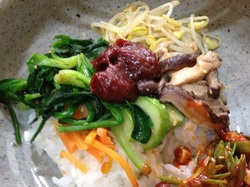 In March I realized that I would be leaving Korea in less than 6 months and so I decided to take advantage of an opportunity that recently had presented itself. I learned via the waygook-in grapevine of a bi-monthly cooking class that was being held in Daegu for foreigners. I immediately got in touch with a woman who was helping to organize the class to ensure that it would be appropriate for vegetarians and she confirmed it could and so I committed to a class. The class is held in the far side of Daegu - a city which is approximately 1 hour and 30 minutes from Jeomchon. From there I had to take a taxi to the closest subway line and then take the subway to one of the last stops on the line. In all it takes approximately 2 1/2 hours from Jeomchon and costs nearly 40,000 won ($35 USD) just for travel. Each class costs 30,000 won. The cooking classes are organized by a woman and her friends - all current or former Korean English teachers. The leader is a woman who lived in the U.S. for 7 and has only become interested in traditional Korean cooking in the past decade or so. She holds the classes in a small store front where she sells pottery which she also makes. Our first lesson was on the popular dish bibimbap. The dish is incredibly simple - rice topped with vegetables, meat (if you so choose), egg and the ubiquitous gochujang, a sweet and slightly spicy sauce that is common in Korean food. Though bibimbap is an incredibly easy food to make it is a bit time consuming since each vegetable is cooked and seasoned separately. The cooking class is conducted in the back room of a small store - the small alley kitchen in the store is not large enough to accommodate the 4 class participants. Therefore a small portable gas burner is used to prepare the food. Due to this set-up the class is not very hands on. The cook instructs how to make the food while the participants observe her. Occasionally we're invited to stir an item or mix in an ingredient. In addition to the main dish the women typically prepare a small amount of banchan - side dishes that are traditionally served with Korean food. Kimchi is probably the most common banchan but vegetables and sometimes fish or meat are also popular side dishes. For lunch kimchi, which had been prepared in advance, in addition to tofu and fried zucchini was served. After eating lunch we enjoyed some tea along with simple fried dough topped with real azalea flowers. While we ate we chatted about a variety of things - the Korean English teachers all speak excellent English and were very curious about different aspects of Western culture. After our first class we were given a small hand made ceramic cup as a gift for attending. In our second cooking class we learned how to make japchae - a dish of stir fried vegetables and meat with sweet potato cellophane noodles. I actually really enjoy this dish so I was excited to learn how to make it. The preparation for japchae is similar to bibimbap in that all the vegetables are cooked and seasoned separately until they're put together for the final dish. We enjoyed this dish alongside a small bowl of rice and a variety of banchan including cabbage kimchi (the most common type of kimchi) and cucumber kimchi. I enjoyed the cucumber kimchi so much that I have since found a couple recipes and I hope to make it sometime in the near future.
While I enjoy the cooking classes and the company of both foreigners and Koreans I am not sure if I'll continue them in the future. The cost is a bit high due to the long distance I have to travel to Daegu. Also, with my time in Korea quickly diminishing there are a few things which I'd like to do on the weekends and so my schedule is not as open. |
| Mindy in the City |
|
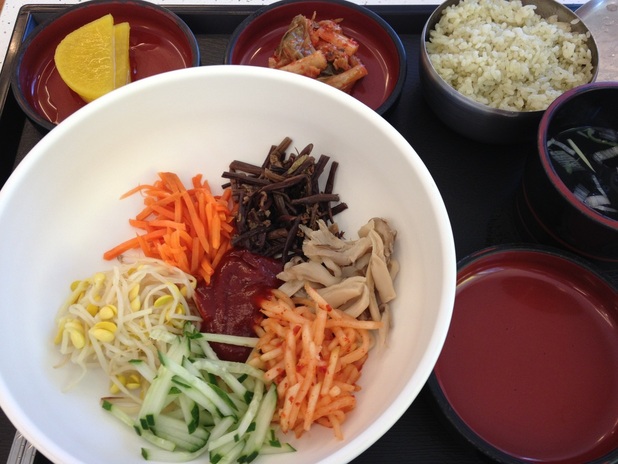
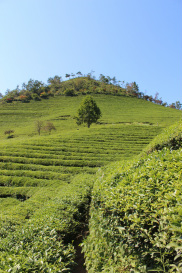
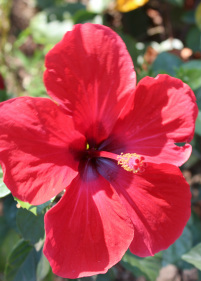
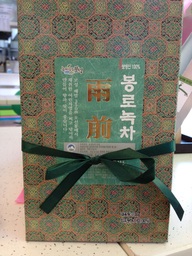
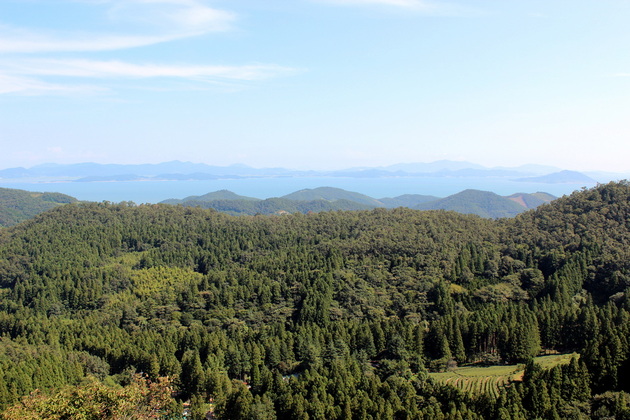
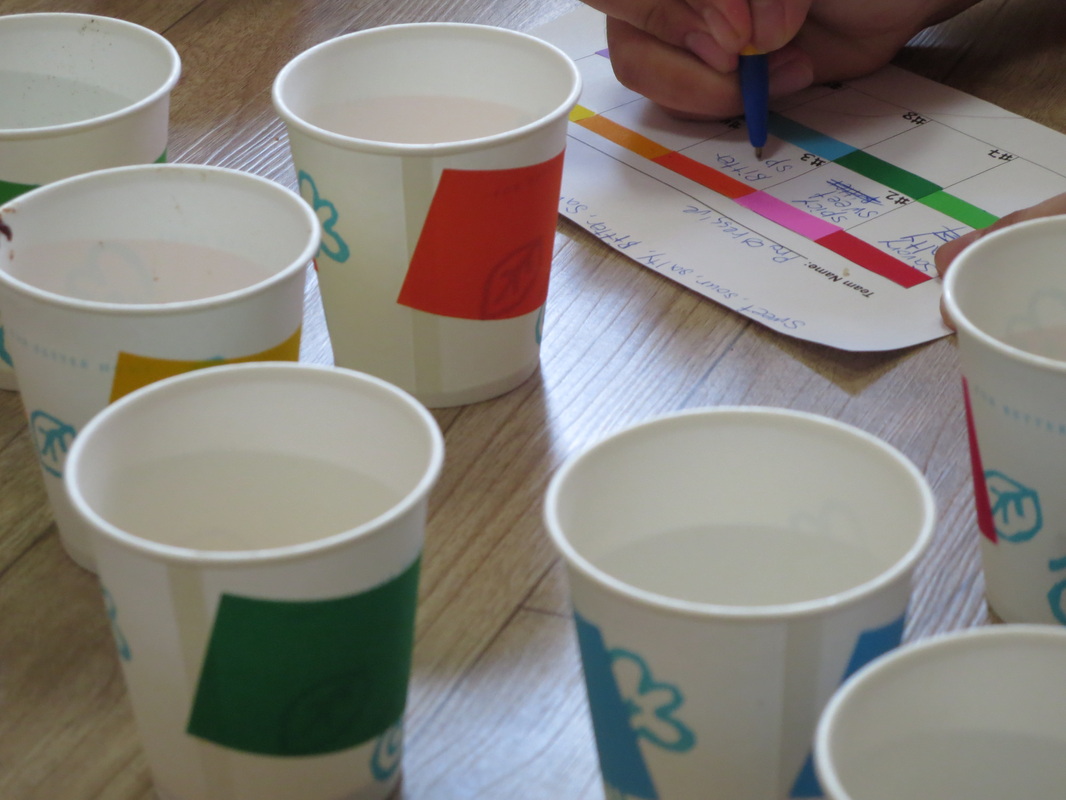
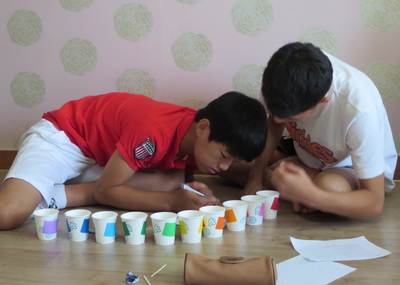
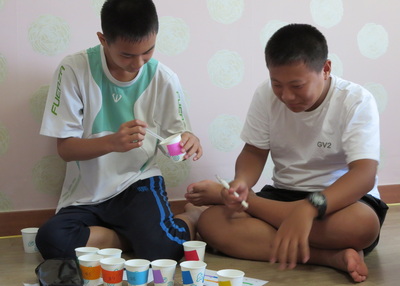
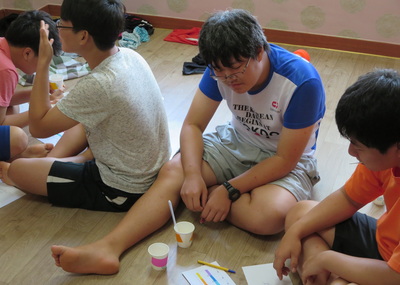
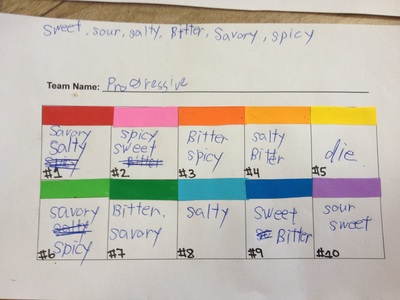
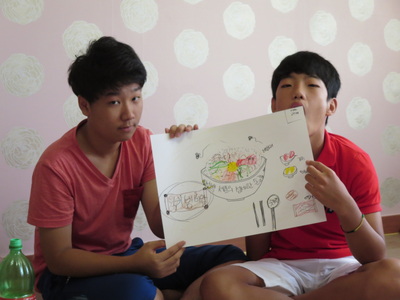

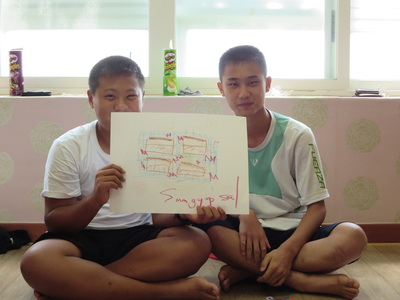
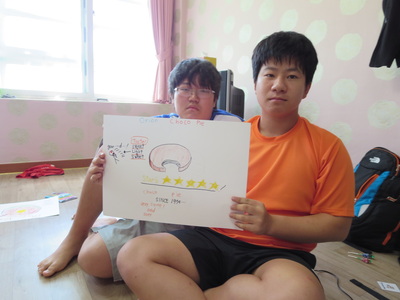
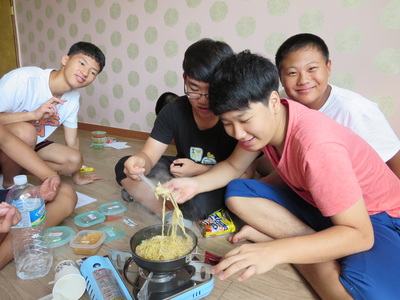
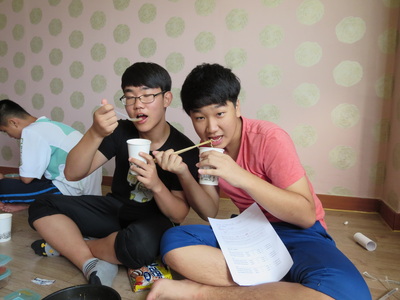
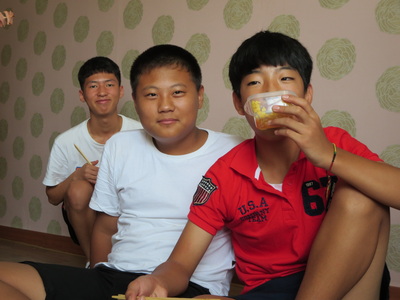
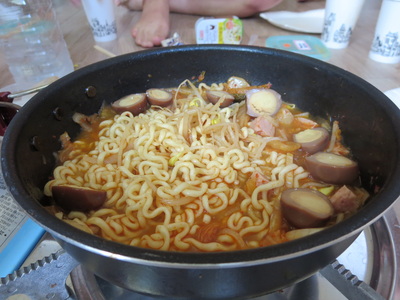
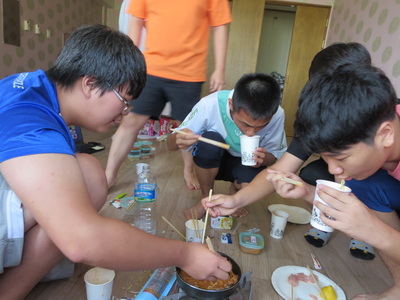
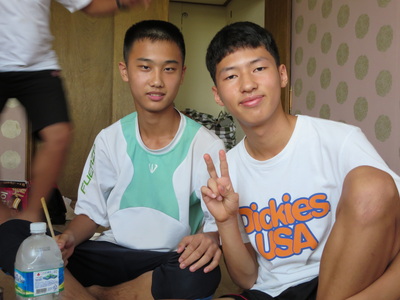
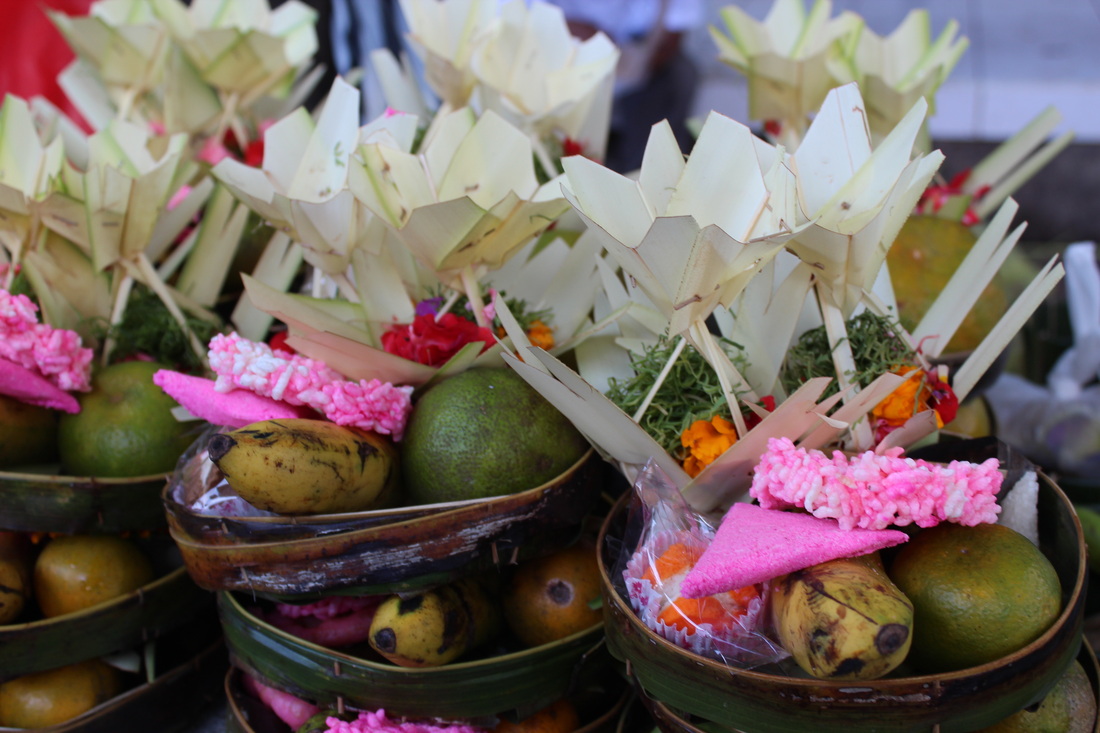
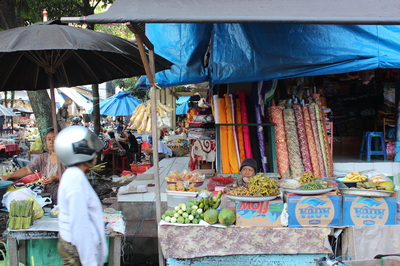
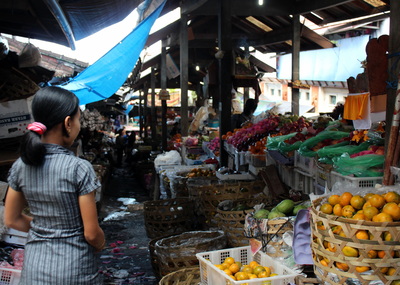
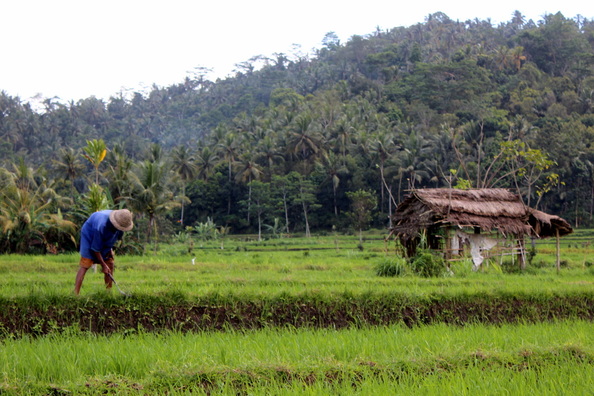
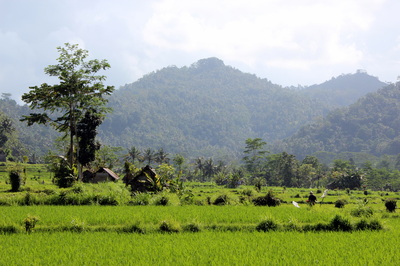
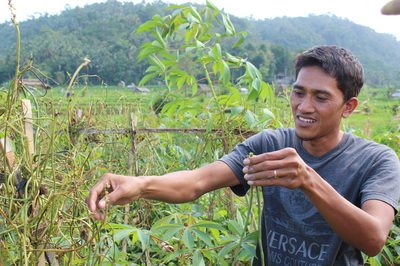
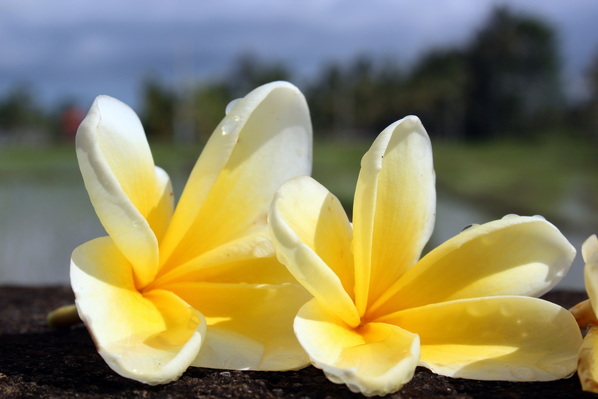
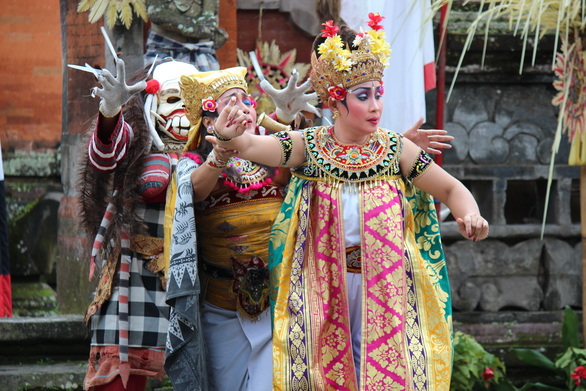
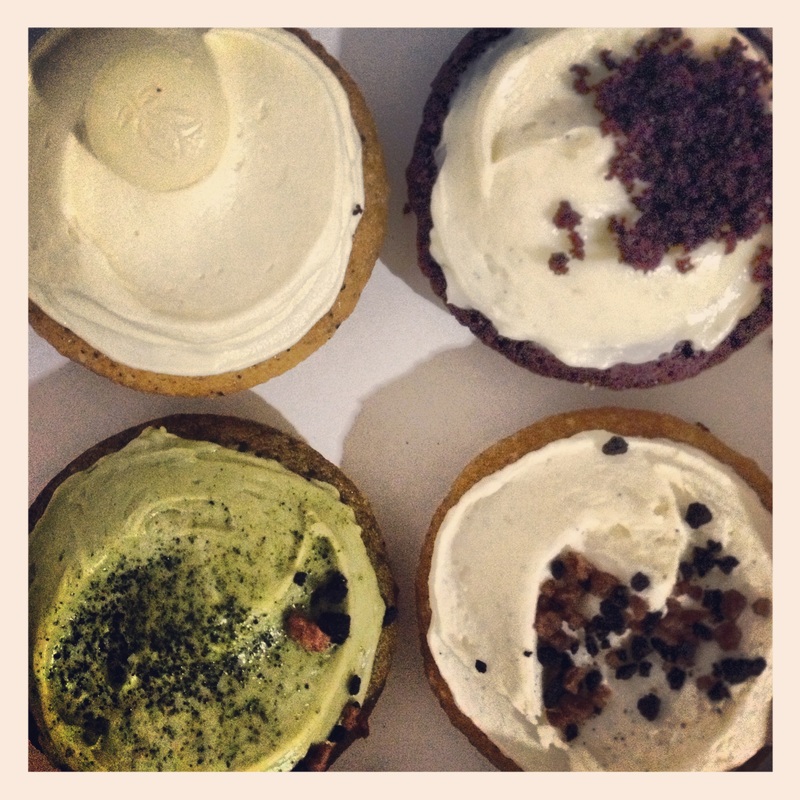
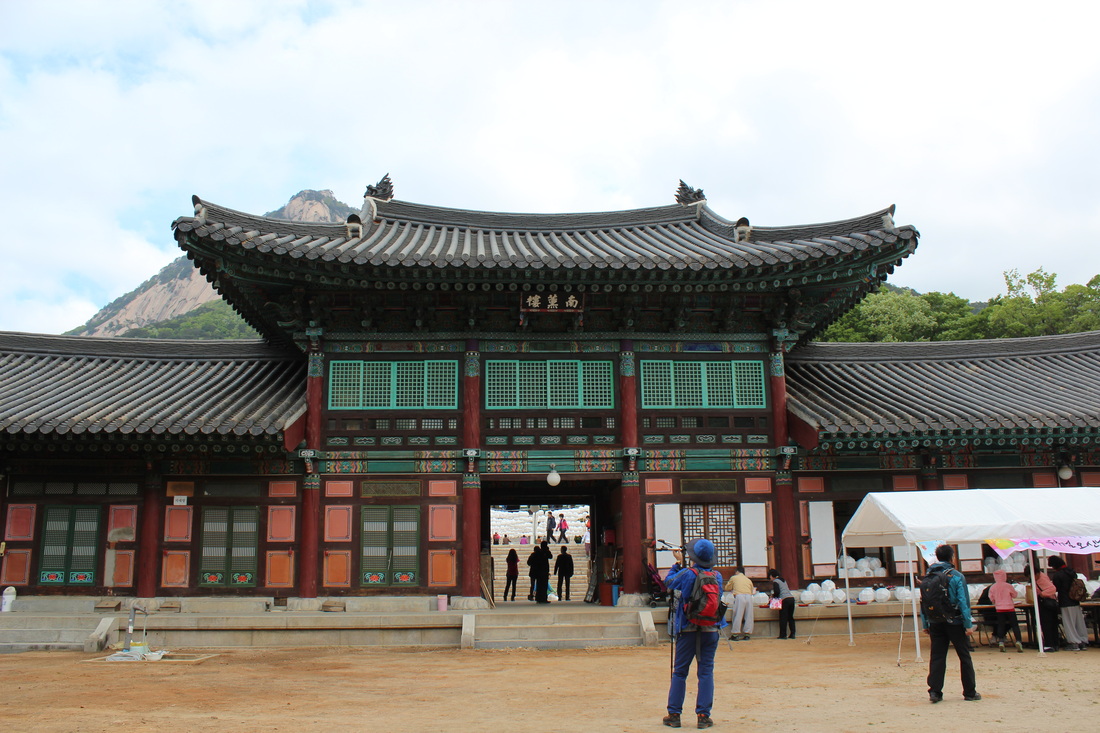
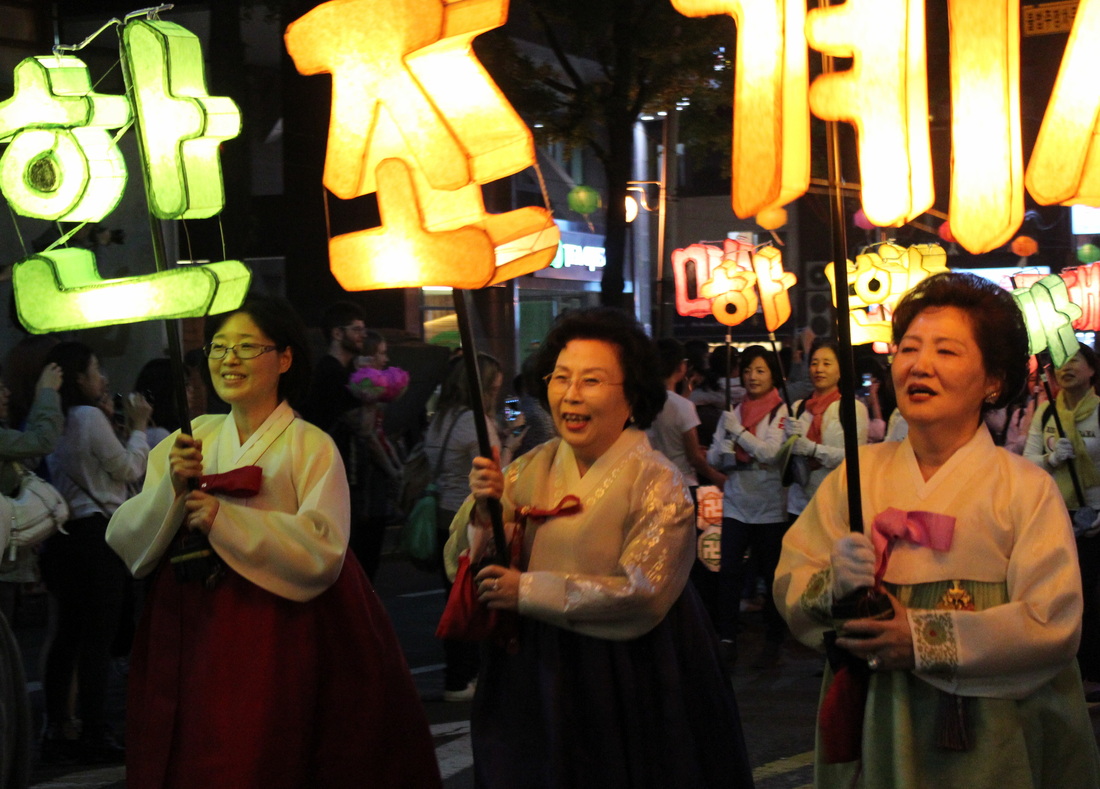



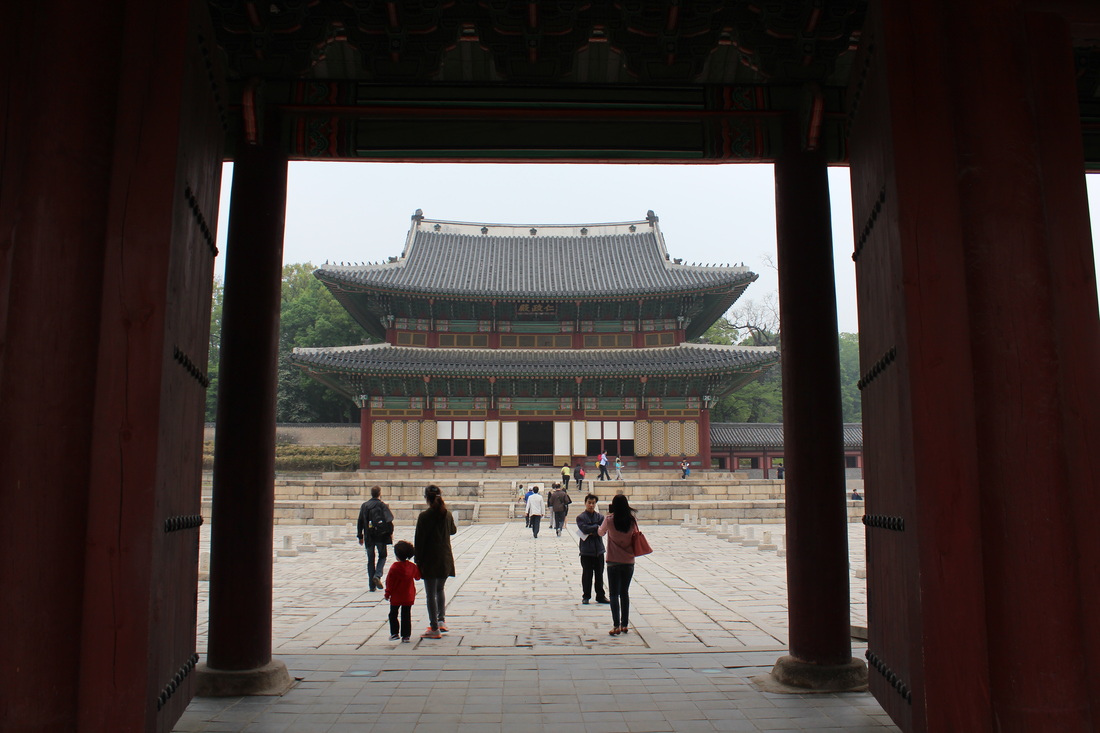




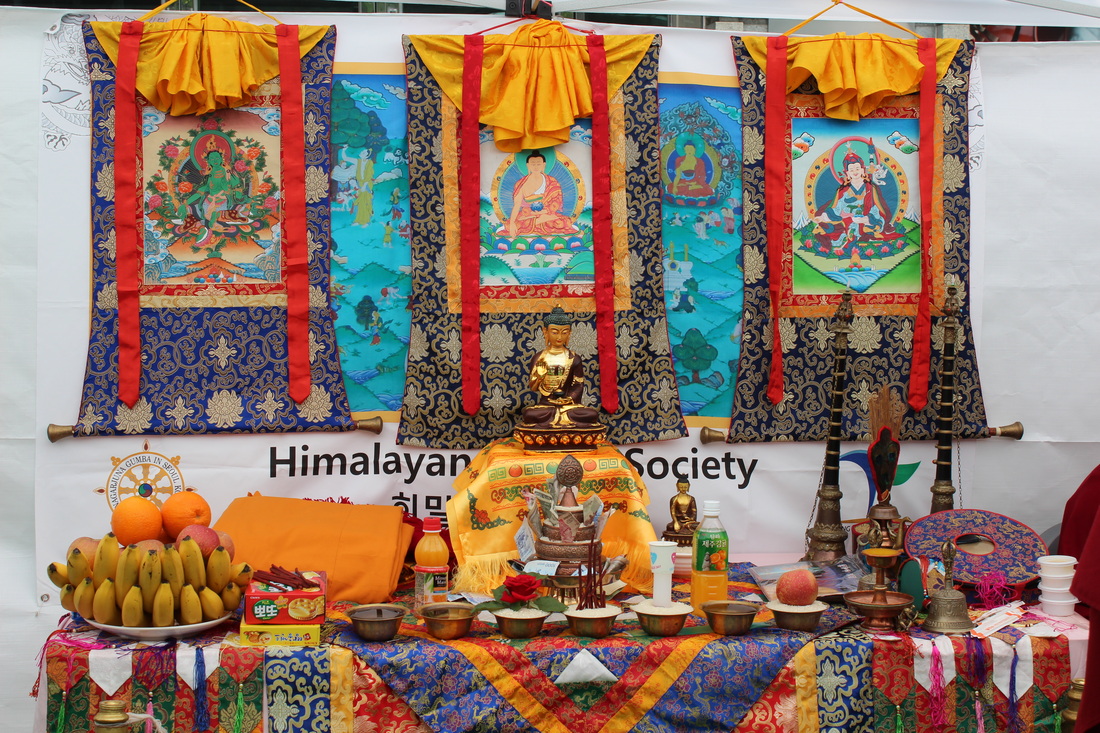
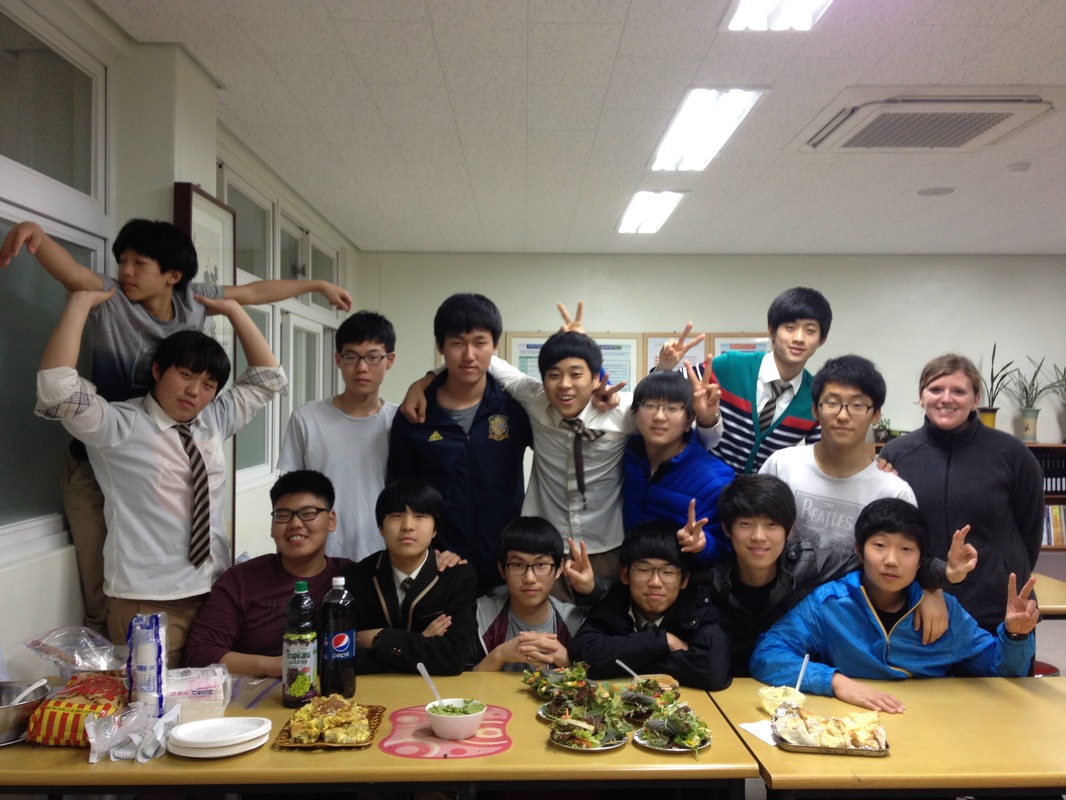










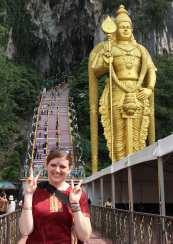
 RSS Feed
RSS Feed